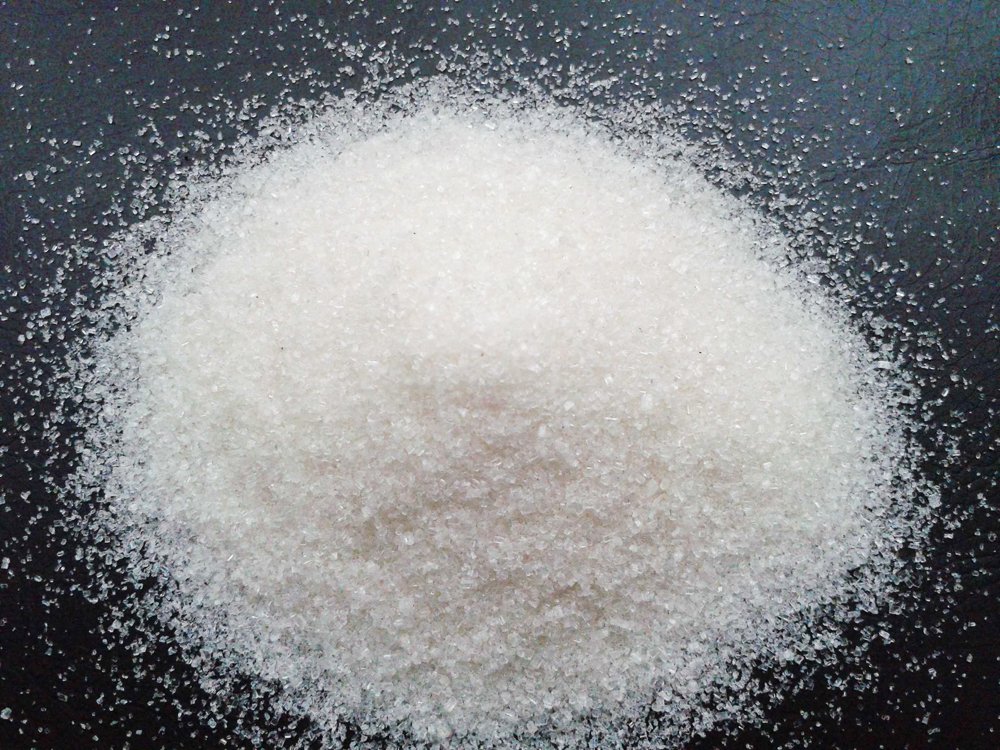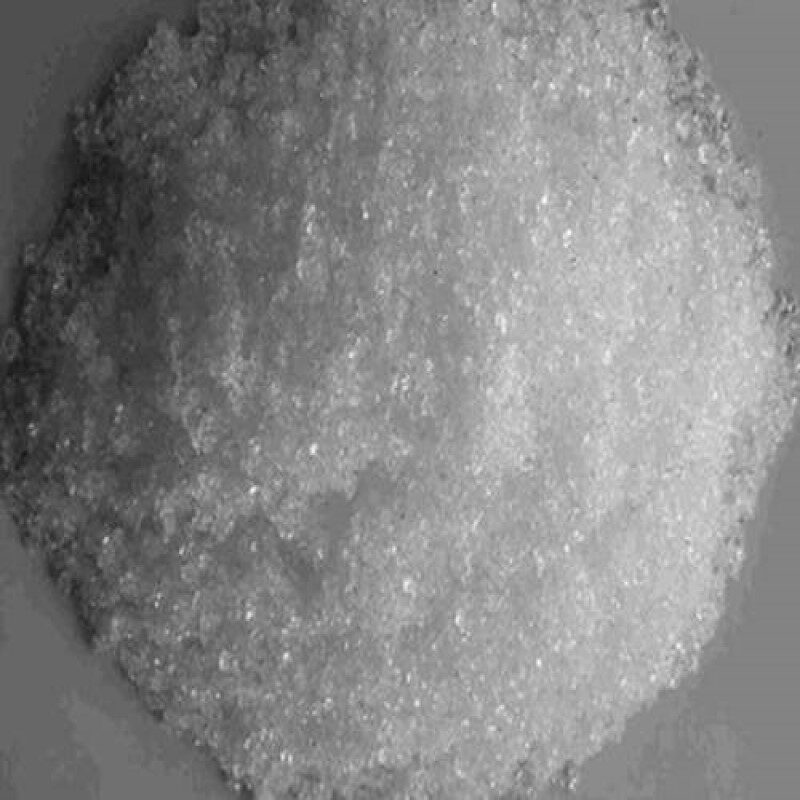Description
White translucent crystalline masses with strong ammonical odor. It is a mixture of Ammonium Carbonate and Ammonium Bi-carbonate in equimolecular proportions.
| Characteristic. |
|
| Ammonia or NH3 |
– Not less than 30% NH3 |
Ammonium Carbonate Powder FAQs
1. What is the purpose of Ammonium Carbonate Powder?
Ammonium Carbonate Powder is commonly used as a leavening agent in baking, particularly in recipes that require extra rise. It releases carbon dioxide gas when heated, helping dough or batter to expand and become lighter.
2. Can I use Ammonium Carbonate Powder as a substitute for baking soda?
While Ammonium Carbonate Powder and baking soda are both leavening agents, they have different properties. It is not recommended to substitute Ammonium Carbonate Powder for baking soda in recipes, as it may affect the taste and texture of the final product.
3. Is Ammonium Carbonate Powder safe to consume?
Ammonium Carbonate Powder is generally safe for consumption when used in small quantities in baking. However, it is important to follow the recommended usage guidelines and avoid inhaling the powder directly.
4. Where can I find Ammonium Carbonate Powder?
Ammonium Carbonate Powder can be found in baking supply stores, specialty food stores, or online retailers that sell baking ingredients. Ensure that you are purchasing from Amizara Speciality Chemicals LLP a reputable source and follow all safety guidelines when handling this compound.
MSDS
Product Identification
| Synonyms: |
Carbonic Acid, Diammonium Salt, Diammonium Carbonate, Crystal Ammonia CAS |
| No.: |
506-87-6 |
| Molecular Weight: |
96.09 |
| Chemical Formula: |
(NH4)2CO3 |
Composition/Information on Ingredients
| Ingredient |
CAS No. |
Percent |
Hazardous |
| Ammonium Carbonate |
506-87-6 |
100% |
Yes |
Hazards Identification
Emergency Overview
WARNING! HARMFUL IF SWALLOWED OR INHALED. CAUSES IRRITATION TO SKIN, EYES AND RESPIRATORY TRACT.
SAF-T-DATA(tm) Ratings (Provided here for your convenience)
| Health Rating |
2 – Moderate |
| Flammability Rating |
1 – Slight |
| Reactivity Rating |
2 – Moderate |
| Contact Rating: |
3 – Severe |
| Lab Protective Equip: |
GOGGLES & SHIELD; LAB COAT & APRON; VENT HOOD; PROPER GLOVES Storage Color Code: Green (General Storage) |
Potential Health Effects
Inhalation:
Dust may cause irritation of the nose, throat, and lungs. Ammonia vapors released upon decomposition may cause irritation of the upper respiratory tract, with coughing, vomiting, and redness to the mucous membranes. Higher concentrations (> 1000 ppm) may cause restlessness, tightness in the chest, pulmonary edema, weak pulse, and cyanosis.
Ingestion:
Causes irritation to the gastrointestinal tract. Symptoms may include nausea, vomiting and diarrhea.
Skin Contact:
Causes irritation to skin. Symptoms include redness, itching, and pain. Causes burning or serious burns if decontamination is delayed.
Eye Contact:
Causes irritation, redness, and pain. Causes burning or serious burns if decontamination is delayed.
Chronic Exposure:
No information found.
Aggravation of Pre-existing Conditions:
Persons with pre-existing lung disease may be more susceptible to the effects of this substance.
First Aid Measures
Inhalation:
Remove to fresh air. If not breathing, give artificial respiration. If breathing is difficult, give oxygen. Get medical attention.
Ingestion:
Induce vomiting immediately as directed by medical personnel. Never give anything by mouth to an unconscious person.
Skin Contact:
Immediately flush skin with plenty of water for at least 15 minutes. Remove contaminated clothing and shoes. Get medical attention. Wash clothing before reuse. Thoroughly clean shoes before reuse.
Eye Contact:
Immediately flush eyes with plenty of water for at least 15 minutes, lifting lower and upper eyelids occasionally. Get medical attention immediately.
Fire Fighting Measures
Fire:
Not considered to be a fire hazard.
Explosion:
Generation of ammonia gas may be an explosion hazard.
Fire Extinguishing Media:
Use any means suitable for extinguishing surrounding fire.
Special Information:
In the event of a fire, wear full protective clothing and NIOSH-approved self-contained breathing apparatus with full facepiece operated in the pressure demand or other positive pressure mode.
Accidental Release Measures
Ventilate area of leak or spill. Keep unnecessary and unprotected people away from area of spill. Wear appropriate personal protective equipment as specified in Section 8. Spills: Pick up and place in a suitable container for reclamation or disposal, using a method that does not generate dust. US Regulations (CERCLA) require reporting spills and releases to soil, water and air in excess of reportable quantities.
Handling and Storage
Keep in a tightly closed container, stored in a cool, dry, ventilated area. Protect against physical damage. Isolate from incompatible substances. Store below 30C. Containers of this material may be hazardous when empty since they retain product residues (dust, solids); observe all warnings and precautions listed for the product.
Exposure Controls/Personal Protection<
Airborne Exposure Limits:
For Ammonia:
– OSHA Permissible Exposure Limit (PEL) –
50 ppm
– ACGIH Threshold Limit Value (TLV) –
25 ppm (TWA), 35 ppm (STEL)
Ventilation System:
A system of local and/or general exhaust is recommended to keep employee exposures below the Airborne Exposure Limits. Local exhaust ventilation is generally preferred because it can control the emissions of the contaminant at its source, preventing dispersion of it into the general work area. Please refer to the ACGIH document, Industrial Ventilation, A Manual of Recommended Practices, most recent edition, for details.
Personal Respirators (NIOSH Approved):
If the exposure limit is exceeded and engineering controls are not feasible, a full facepiece respirator with an ammonia/methylamine cartridge may be worn up to 50 times the exposure limit or the maximum use concentration specified by the appropriate regulatory agency or respirator supplier, whichever is lowest. For emergencies or instances where the exposure levels are not known, use a full-facepiece positive-pressure, air-supplied respirator. WARNING: Air purifying respirators do not protect workers in oxygen-deficient atmospheres.
Skin Protection:
Wear impervious protective clothing, including boots, gloves, lab coat, apron or coveralls, as appropriate, to prevent skin contact.
Eye Protection:
Use chemical safety goggles and/or full face shield where dusting or splashing of solutions is possible. Maintain eye wash fountain and quick-drench facilities in work area.
Physical and Chemical Properties<
| Appearance: |
Colorless crystal or white powder. |
| Odor: |
Strong ammonia-like odor. |
| Solubility: |
Soluble in water, decomposes in hot water |
| Specific Gravity: |
1.50 @ 20C/4C |
| pH: |
9.0 (100g/L H2O) |
| % Volatiles by volume @ 21C (70F): |
0 |
| Boiling Point: |
@ 760 mm Hg (Decomposes) |
| Melting Point: |
58C (136F) |
| Vapor Density (Air=1): |
No information found. |
| Vapor Pressure (mm Hg): |
760 @ 60C (140F) |
| Evaporation Rate (BuAc = 1): |
No information found. |
Stability and Reactivity<
Stability:
Stable under ordinary conditions of use and storage. Becomes unstable upon exposure to air and converts into ammonium bicarbonate. This process liberates ammonia and carbon dioxide.
Hazardous Decomposition Products:
Burning may produce ammonia, carbon monoxide, carbon dioxide, nitrogen oxides. Contact with water or prolonged contact with air may liberate ammonia.
Hazardous Polymerization:
Will not occur.
Incompatibilities:
Sodium hypochlorate, acids and acid salts, iron salts, zinc, alkaloids, aluminum and calomel, sodium nitrate and nitrites. Corrosive to nickel, copper and other alloys.
Conditions to Avoid:
Exposure to heat, prolonged exposure to air, contact with water, and incompatibles.
Toxicological Information<
For Ammonium Carbonate, Oral rat LD50: 2150 mg/kg
Cancer Lists
| Ingredient |
NTP |
Carcinogen |
IARC |
|
Known |
Anticipated |
Category |
| Ammonium Carbonate |
No |
No |
None |
Ecological Information<
Environmental Fate:
No information found.
Environmental Toxicity:
96 Hr LC50 fathead minnow: 37 mg/L
Disposal Considerations
Whatever cannot be saved for recovery or recycling should be managed in an appropriate and approved waste facility. Although not a listed RCRA hazardous waste, this material may exhibit one or more characteristics of a hazardous waste and require appropriate analysis to determine specific disposal requirements. Processing, use or contamination of this product may change the waste management options. State and local disposal regulations may differ from federal disposal regulations. Dispose of container and unused contents in accordance with federal, state and local requirements.
Transport Information<
Not regulated.
Regulatory Information
Chemical Inventory Status – Part 1
Ingredient TSCA EC JAPAN AUSTRALIA
Ammonium Carbonate (506-87-6) Yes Yes Yes Yes
Chemical Inventory Status – Part 2
CANADA
Ingredient KOREA DSL NDSL PHIL
Ammonium Carbonate (506-87-6) Yes Yes No Yes
Federal, State & International Regulations – Part 1
-SARA 302 –SARA 313-
RQ TPQ List Chemical Catg.
Ingredient
Ammonium Carbonate (506-87-6) No No No No
Federal, State & International Regulations – Part 2
-RCRA- -TSCA-
Ingredient CERCLA 261.33 8(d)
Ammonium Carbonate (506-87-6) 5000 No No
Chemical Weapons Convention: No TSCA 12(b): No CDTA: No
SARA 311/312: Acute: Yes Chronic: No Fire: No Pressure: No
Reactivity: No (Pure / Solid)
| Australian Hazchem Code: |
None allocated. |
| Poison Schedule: |
None allocated. |
| WHMIS: |
This MSDS has been prepared according to the hazard criteria of the Controlled Products Regulations (CPR) and the MSDS contains all of the information required by the CPR. |
Other Information
| NFPA Ratings: |
Health: 2 Flammability: 0 Reactivity: 2 |
| Label Hazard Warning: |
WARNING! HARMFUL IF SWALLOWED OR INHALED. CAUSES IRRITATION TO SKIN,EYES AND RESPIRATORY TRACT. |
| Label Precautions: |
Avoid contact with eyes, skin and clothing.
Wash thoroughly after handling.
Avoid breathing dust or vapors.
Keep container closed.
Use only with adequate ventilation. |
Label First Aid:
If swallowed, induce vomiting immediately as directed by medical personnel. Never give anything by mouth to an unconscious person. If inhaled, remove to fresh air. If not breathing, give artificial respiration. If breathing is difficult, give oxygen. In case of contact, immediately flush eyes or skin with plenty of water for at least 15 minutes. Remove contaminated clothing and shoes. Wash clothing before reuse. In all cases, get medical attention.
Product Use:
Laboratory Reagent.
Revision Information:
No Changes.




